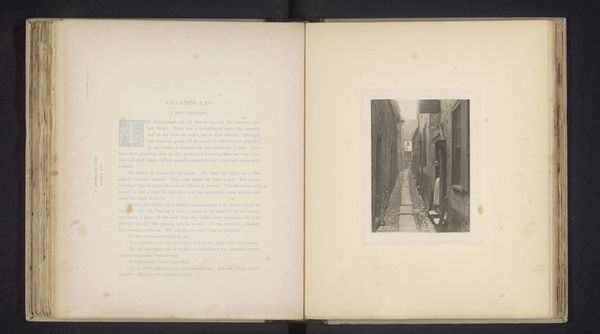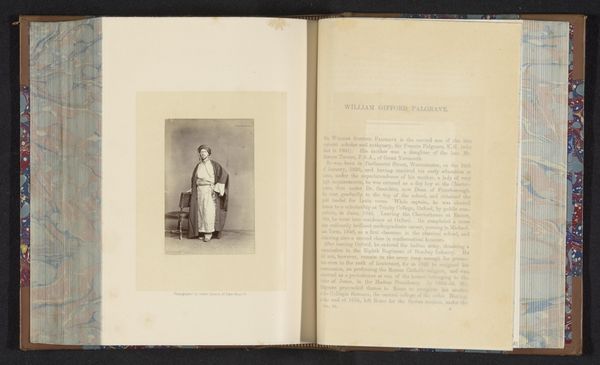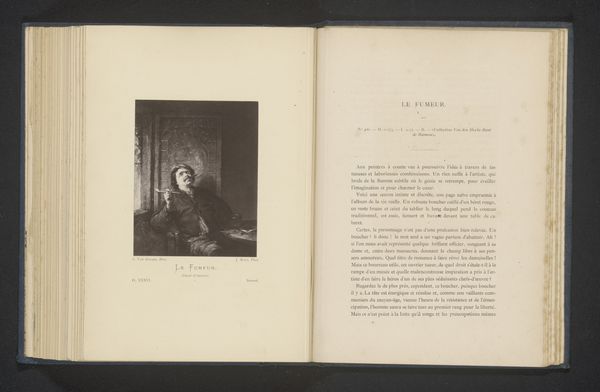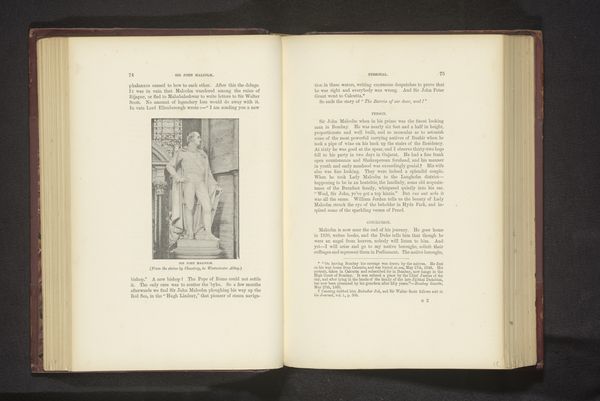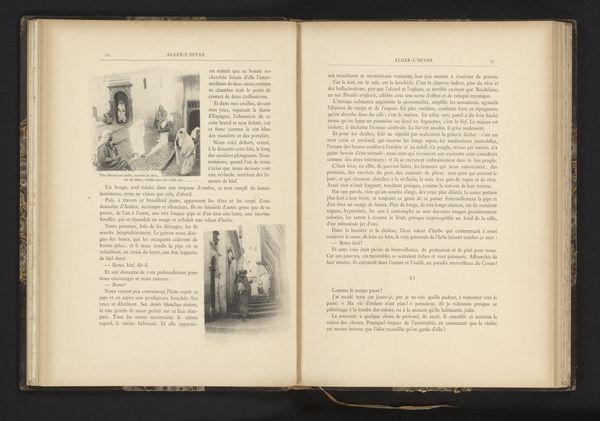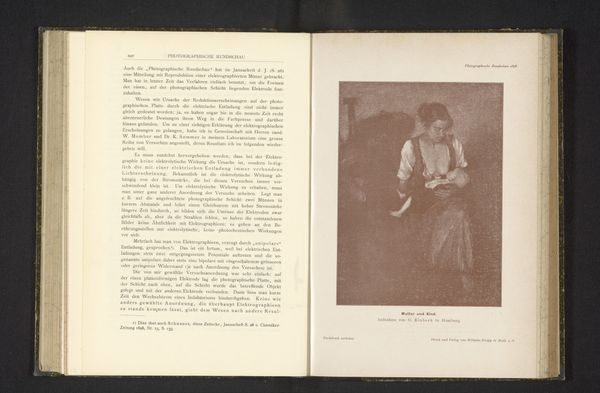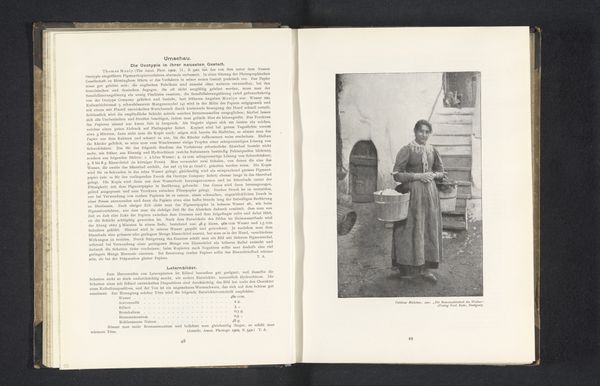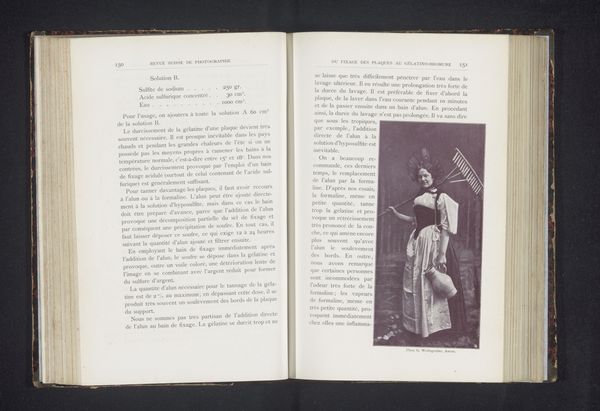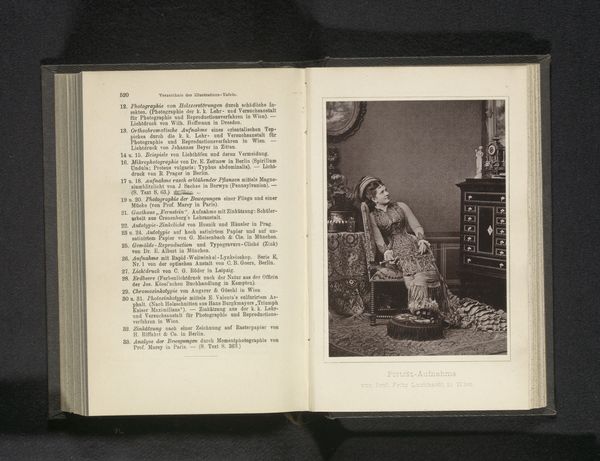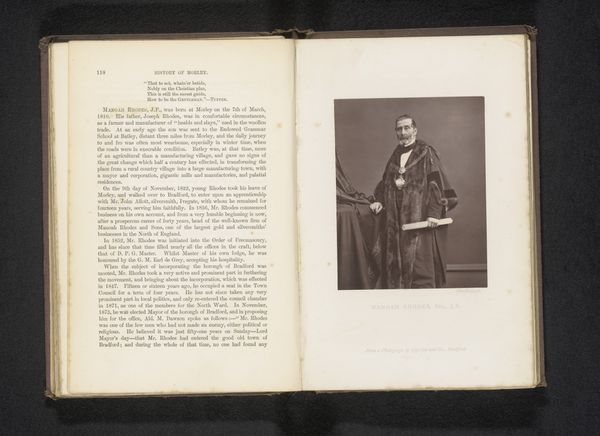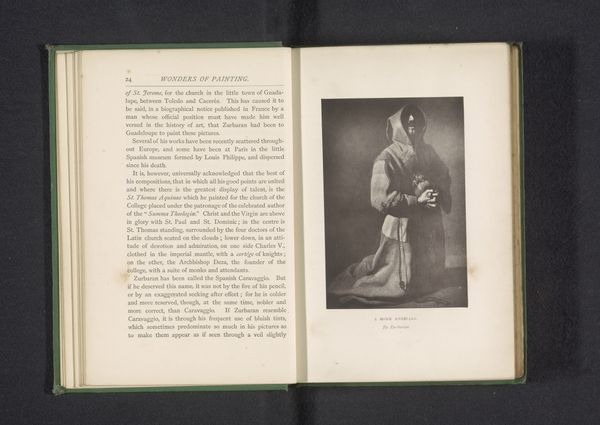
mixed-media, print, photography, albumen-print
#
portrait
#
mixed-media
# print
#
photography
#
genre-painting
#
albumen-print
Dimensions: height 131 mm, width 95 mm
Copyright: Rijks Museum: Open Domain
Curator: I find myself strangely drawn to the textures present in this print—they contribute an almost palpable presence. Editor: Indeed. We are looking at Napoleon Sarony’s "Portrait of Joseph Jefferson as Rip Van Winkle," produced around 1869. It's an albumen print, part of the mixed-media approach characteristic of his photographic portraits. Curator: The pose is quite theatrical, isn't it? There is almost a forced quality in the angles of the limbs. The subject's arrangement within the frame also strikes me, dividing the space with its rather abrupt lines. Editor: Certainly, the pose is staged, typical for theatrical portraiture of the period. Jefferson was quite famous for his stage portrayal of Rip Van Winkle. These images helped perpetuate his popular image. What seems abrupt to your formal reading might instead be strategic framing for publicity. Curator: Ah, you locate this within its socio-cultural landscape. It still strikes me—see the use of light? Rather flattened and devoid of great drama. Editor: But observe, the diffusion might serve a double purpose. While visually softening, which could flatter his public image, it perhaps mirrors a quality associated with the character he plays—lost, hazy, even fading into memory. It elevates the portrait to something larger than simply likeness. Curator: So, technique used in the service of cultural meaning. Interesting, given your context. Though technically a genre scene because it depicts a stage role, do you think we should consider it under the category of theatrical publicity primarily? Editor: Undoubtedly, this piece navigates the intersection. Sarony was a master of both. And consider the rapid spread of celebrity culture then. I think this tells us much about 19th-century image-making and circulation. Curator: So you would say understanding that helps unravel any potential discordance the formal reading picks up. Editor: It certainly helps re-contextualize it. I'm left now pondering this connection between representation and cultural identity. Curator: I will also reconsider this in light of the broader representational techniques used, understanding how conventions intersect and at times obfuscate, artistic expression and image-making strategies.
Comments
No comments
Be the first to comment and join the conversation on the ultimate creative platform.
